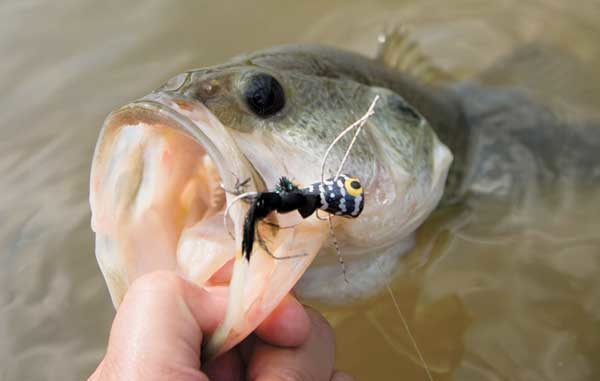
It’s a pretty good guess that one sight you’ll never see in the boat of a professional bass fisherman is a brace of fly rods and reels. That’s because fly-fishing is not the most efficient way to catch largemouth bass — or any other fish, for that matter. But there is simply no other technique that can provide the same fun and excitement as catching a big old bigmouth with the long rod.
If you value excitement over efficiency, you might want to give this fly-fishing thing a try.
The largemouth bass is easily the most-popular gamefish across South Carolina and the rest of the country. Its predatory prowess, fighting ability and adaptability to a variety of different waters contributes to its widespread popularity.
The largemouth bass is also a natural for fly anglers.
If you are new to the sport of fly-fishing, excitement awaits you, even if you’ve previously caught largemouth bass on spinning or bait casting gear. No experience with conventional fishing tackle can compare to a hard fighting “hawg” putting a bend into a 6-weight rod. Every jump, run, and headshake is amplified through the limber rod, while the soft tip absorbs the fish’s power and protects the tippet and vulnerable knots.
There is no specialized equipment needed for fly-rod bass fishing. A 6- to 8-weight rod with a floating line is all you need to get started. You don’t need to learn about insects and their fancy Latin names or life stages. No worries about “matching the hatch” either. Bass are mainly meat-eaters: baitfish, crayfish, and frogs, just to name a few favorites. This makes fly selection a relatively easy proposition.
Here are the basic types of flies used for largemouth bass, without getting too deep into specifics:
• Top-water flies. Top-water flies or bugs made of deer hair or balsa are simply deadly for bass when the conditions are right. Low-light conditions such as dawn, dusk or overcast skies are when these flies are most effective. Having a bass come up from the murky depths to smash one of these offerings is the apex of the sport.
• A swimming frog or mouse pattern retrieved over the water’s surface with short, abrupt strips can provoke some vicious strikes. Set the hook extra hard and hold on!
• Terrestrial floating flies such as grasshoppers or cicadas are also effective during late summer and early autumn.
• Diving flies. These flies float initially, but dive like a crankbait when retrieved. The Dahlberg Diver is the best known of the diving flies; it can be fished at almost any depth, depending on whether a floating or sinking line is used, and the length of the leader.
• Swimming flies. They flies imitate baitfish and are always fished subsurface. The most popular swimming fly is the streamer, which comes in almost every color, size, weight, and variety. Like the Dahlberg Diver, swimming flies and streamers can be fished at almost any depth.
Streamers can be retrieved quickly to trigger impulsive, anger-motivated strikes that capitalize on the largemouth’s predatory instincts, or they can be pulled slowly through the water when the temperatures cool down and the fish become more lethargic. Streamers can also be tied with weight, for getting down to deeper fish, or un-weighted for a shallower retrieve.
Efficiency is not an advantage when considering a fly-fishing approach to largemouth bass. You will make fewer casts per day when compared to conventional tackle, and there will be fewer fished hooked per cast.
But what fly-fishing lacks in efficiency, it more than makes up for in fun. And isn’t that what this should all be about?



Be the first to comment